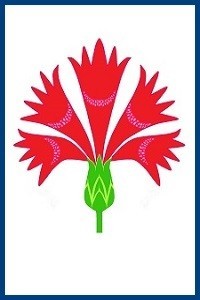Türkiye'nin Orta Karadeniz Bölgesi Ova Çayır Vejetasyonunda Hayvan Otlatılan Bir Alan ve Hayvan Otlatılmayan Korunmuş Bir Komşu Arazinin Yeraltı Biyokütlesi ve Verimliliği
Bu çalışmanın konusu, Orta Karadeniz bölgesindeki ova çayırlarının yer altı bitki biyokütlesini ve yıllık yer altı net birincil üretimini belirlemektir. Bu çalışmada, hayvan otlatılmayan ve otlatılan çayır topluluklarında yıllık ortalama yer altı bitki biyokütle miktarı ve mevsimsel dağılımı, yıllık birincil üretim ve devir hızı (turnover) değerleri hesaplanmıştır. Hayvan otlatılan meşcerelerin yer altı bitki biyokütlesi, yer altı net birincil üretimi ve devir hızı, hayvan otlatılmamış alanlara göre daha yüksektir. Bu devir hızı değeri hayvan otlatılan alanlarda kök biyokütlesinin daha hızlı yenilendiğini göstermektedir. Otlatma süresi/miktarı, yıllık yağış miktarı ve toprak özellikleri bu farklı sonuçlara yol açmış olabilir.
Anahtar Kelimeler:
Biyokütle, Toprakaltı, Çayır, Türkiye, Verimlilik
Below-ground Biomass and Productivity of a Grazed Site and a Neighbouring Ungrazed Exclosure in the Lowland Meadow Vegetation of the Central Black Sea Region of Türkiye
The subject of this study is to determine the below-ground plant biomass and annual below-ground net primary production of lowland meadows in the Central Black Sea region. This study calculated the annual average amount of below-ground plant biomass, its seasonal distribution, annual primary production, and turnover values in the ungrazed and grazed meadow stands. Below-ground plant biomass, below-ground net primary production, and turnover of grazed stands were higher than in ungrazed stands. This turnover value shows that root biomass is renewed faster in grazed areas. Grazing, annual rainfall, and soil characteristics may have led to these different results.
Keywords:
Belowground, Biomass, Meadow Productivity, Türkiye, Türkiye, Türkiye, Türkiye,
___
- Dahlman, R.C. & Kucera, C.L. (1965). Root productivity and turnover in native prairie. Ecology 46(12): 8489. DOI: https://doi.org/10.2307/1935260.
- Dinç, M., Duman, A., Tüfekçioğlu, M. & Tüfekçioğlu, A. (2018). Biomass allocation in relation to precipitation, temperature and soil properties in the grassland of Çoruh River Basin, Turkey: Using structural equation modelling with Amos. International Journal of Ecosystems and Ecology Science 8(3): 457470. DOI: https://doi.org/10.31407/ijees834.
- EUNIS (2022). The European Nature Information System. Habitat types search. https://eunis.eea.europa.eu/index.jsp 09.05.2022].
- Fiala, K. (2010). Below-ground plant biomass of grassland ecosystems and its variation according to ecological factors. Ekológia (Bratislava) 29(2): 182206. DOI: https://doi.org/10.4149/ ekol_2010_02_182.
- Gao, Y.Z., Giese, M., Lin, S., Sattelmacher, B., Zhao, Y. & Brueck, H. (2008). Below-ground net primary productivity and biomass allocation of a grassland in Inner Mongolia is affected by grazing intensity. Plant Soil 307(1): 4150. DOI: https://doi.org/10.1007/s11104-008-9579-3.
- Garcia-Pausas, J., Casals, P., Romanyà, J., Vallecillo, S. & Sebastià, M.T. (2011). Seasonal patterns of below-ground biomass and productivity in mountain grasslands in the Pyrenees. Plant Soil 340(1): 315326. DOI: https://doi.org/10.1007/s11104-010-0601-1.
- IBM (2011). IBM SPSS Statistics for Windows. Version 20.0. Armonk, NY: IBM Corp. Released.
- Jackson, R.B., Canadell, J., Ehleringer, J.R., Mooney, H.A. & Sala, O.E. (1996). A global analysis of root distributions for terrestrial biomes. Oecologia 108(3): 389–411. DOI: https://doi.org/ 10.1007/BF00333714.
- Lauenroth, W.K. & Whitman, W.C. (1971). A rapid method for washing roots. Journal of Range Management 24: 308309.
- Leng, R., Yuan, Q., Wang, Y., Kuang, Q. & Ren, P. (2020). Carbon balance of grasslands on the Qinghai-Tibet plateau under future climate change: A review. Sustainability 12(2): 533. DOI: https://doi.org/10.3390/su12020533.
- López-Mársico, L., Altesor, A., Oyarzabal, M., Baldassini, P. & Paruelo, J.M. (2015). Grazing increases below-ground biomass and net primary production in a temperate grassland. Plant Soil 392(1): 155162. DOI: https://doi.org/10.1007/s11104-015-2452-2.
- Piñeiro, G., Paruelo, J.M., Oesterheld, M. & Jobbágy, E.G. (2010). Pathways of grazing effects on soil organic carbon and nitrogen. Rangeland Ecology & Management 63(1): 109119. DOI: https://doi.org/10.2111/08-255.1.
- Singh, J.S. & Yadava, P.S. (1974). Seasonal variation in composition, plant biomass and net primary productivity of a tropical grassland at Kurukshetra, India. Ecological Monographs 44(3): 351376. DOI: https://doi.org/10.2307/2937034.
- Singh, J.S., Lauenroth, W.K. & Steinhorst, R.K. (1975). Review and assessment of various techniques for estimating net aerial primary production in grasslands from harvest data. Bot Rev 41: 182232. DOI: https://doi.org/10.1007/BF02860829.
- Wang, Y., Pei, W., Cao, G., Guo, X. & Du, Y. (2022). Response characteristics of grassland ecosystem biomass to grazing intensity in China. Grassland Science 68(2): 193–201. DOI: https://doi.org/10.1111/grs.12346.
- Wu, Y., Zhu, B., Eissenstat, D.M., Wang, S., Tang, Y. & Cui, X. (2021). Warming and grazing interact to affect root dynamics in an alpine meadow. Plant Soil 459(1): 109124. DOI: https://doi.org/10.1007/s11104-020-04681-3.
- Yalçın, E., Kılınç, M., Kutbay, H.G., Bilgin, A. & Korkmaz, H. (2014). The lowland meadow vegetation of the central Black Sea region of Turkey. Ekoloji (23)91: 3651. DOI: https://doi.org/10.5053/ekoloji.2014.916.
- Yalçın E., Doğan, A. & Akçin, A. (2016). Effects of grazing on soil parameters in meadow ecosystems. Hacettepe Journal of Biology and Chemistry 44(2): 161–171. DOI: https://doi.org/10.15671/ HJBC.20164418124.
- Başlangıç: 2020
- Yayıncı: Ergin HAMZAOĞLU
Sayıdaki Diğer Makaleler
Astragalus oksutdagensis (Fabaceae) Tohum Canlılığı, Çimlenme ve Yetişme Özellikleri
Gökçen BAYSAL FURTANA, Fahriye ÖCAL ÖZDAMAR, Hayri DUMAN
Türkiye’den Yeni Bir Tür, Centaurea ankarica (Cardueae, Asteraceae)
Tuna UYSAL, Meryem BOZKURT, Ergin HAMZAOĞLU
Tuğkan ÖZDÖL, Abdurrahman SEFALI, Hasan YILDIRIM
Direkli, Yassıçal ve Abacı Köyleri (Amasya, Türkiye) Arasındaki Bölgenin Sintaksonomik Analizi
